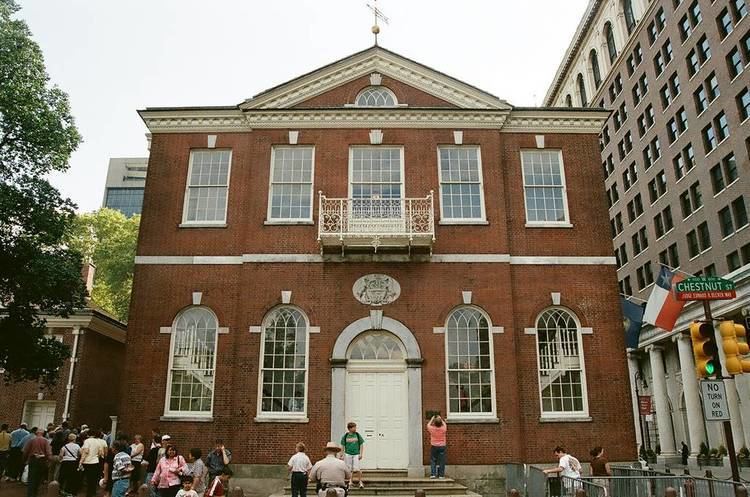 | ||
Members 30-32 (two additions)(with 0-4 vacancies) Senators106-107 (one additions)(with 0-8 vacancies) Representatives1 Non-voting members | ||
The Fourth United States Congress was a meeting of the legislative branch of the United States federal government, consisting of the United States Senate and the United States House of Representatives. It met at Congress Hall in Philadelphia, Pennsylvania from March 4, 1795 to March 4, 1797, during the last two years of George Washington's Presidency. The apportionment of seats in the House of Representatives was based on the First Census of the United States in 1790. The Senate had a Federalist majority, and the House had a Democratic-Republican majority.
Contents
Major events
Treaties ratified
States admitted
Party summary
This was the first Congress to have organized political parties. Details on changes are shown below in the "Changes in membership" section.
Senate
House of Representatives
Members
This list is arranged by chamber, then by state. Senators are listed by class, and Representatives are listed by district.
Skip to House of Representatives, belowSenate
Senators were elected by the state legislatures every two years, with one-third beginning new six-year terms with each Congress. Preceding the names in the list below are Senate class numbers, which indicate the cycle of their election. In this Congress, Class 1 meant their term ended with this Congress, requiring re-election in 1796; Class 2 meant their term began in the last Congress, requiring re-election in 1798; and Class 3 meant their term began in this Congress, requiring re-election in 1800.
Changes in membership
The count below reflects changes from the beginning of this Congress
Senate
There were 10 resignations, 2 new seats, and 1 election to replace an appointee. There was a 1-seat gain for both the Federalists and the Democratic-Republicans.
House of Representatives
There were 9 resignations, 1 death of a Representative-elect, and 1 new seat. There was a 1-seat gain for both the Federalists and the Democratic-Republicans.
Committees
Lists of committees and their party leaders.
